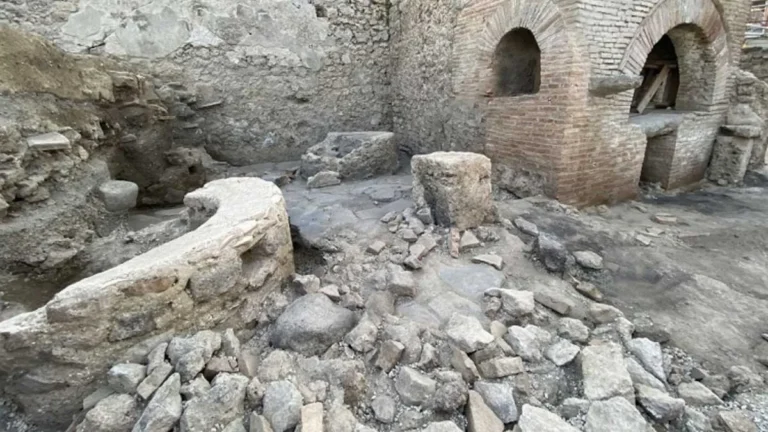Recent archaeological excavations in the ancient Roman city of Pompeii have led to a remarkable discovery: a “prison bakery” where slaves and blindfolded donkeys were confined underground to grind grain for bread-making. This significant find was announced by the Archaeological Park of Pompeii.
The excavation team found this bakery beneath a house in the ruins, uncovering a small, cramped room devoid of any outside view. The only source of light in this room was from small, high windows barred with iron, indicating the room’s use as a containment area.
Further investigations led the archaeologists to conclude that they had unearthed a “prison bakery,” a space likely used to restrict the movement of slaves and animals. Indentations in the floor suggested the controlled movement of the animals, forced to walk around for hours while blindfolded.
The site, which spans 44 hectares and is currently under excavation, revealed a sharp contrast within the house. One part of it was a residential area adorned with exquisite Fourth Style frescoes, while the other was this productive quarter, the bakery. The discovery of three skeletons in a room of the bakery indicated that the house was inhabited.
This bakery was a closed space with no doors or external communication, emphasizing the harsh conditions under which the slaves and animals worked.
Gabriel Zuchtreigel, the director of Pompeii, commented on the discovery, highlighting it as a stark representation of the brutal side of ancient slavery. He noted the absence of trust or promises of manumission, reducing individuals to mere instruments of labor.
The public will have the opportunity to learn more about this aspect of daily life in ancient Pompeii at an upcoming exhibition titled “The Other Pompeii: Ordinary Lives in the Shadow of Vesuvius.” This exhibition, opening on December 15 at the Palestra Grande in Pompeii, aims to shed light on the often overlooked individuals in historical records, like the slaves who formed a significant part of the population and contributed immensely to Roman civilization’s economy, culture, and social structure.
Pompeii, a UNESCO World Heritage Site near Naples, Italy, met its end nearly 2,000 years ago in 79 AD when Mount Vesuvius erupted. The city was buried under ash and rock, preserving many of its buildings and the shapes of victims’ bodies. Today, Pompeii is Italy’s second most-visited tourist destination after the Colosseum in Rome.


